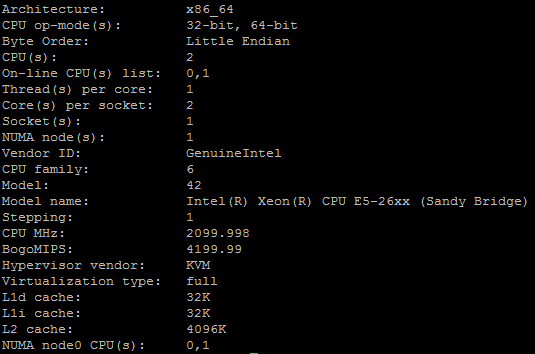Answer the question
In order to leave comments, you need to log in
Is it possible to believe the statement that there are 20 Bitrix sites running on VDS with 4GB of RAM with traffic of 1-2K per day each?
I'd like to know the opinions of experts in this matter. It is assumed that the server hosts not static landing pages, but full-fledged sites using a database integrated with third-party environments such as 1C (exchange of nomenclature, orders), etc.
Configuration clarifications : SSD
processor 
, Bitrix virtual machine (nginx + apache + php5)
By load distribution :
All sites are Russian, one time zone, the topics of the sites are approximately the same ("PVC windows") and the main traffic during "working hours", according to at night the user sleeps.
About the crooked hands of programmers :
It is assumed that programmers have heard about the regular methods of caching Bitrix, they don’t hack the core of the product, they don’t write queries to the database in a cycle.
Answer the question
In order to leave comments, you need to log in
Is it possible to believe the statement that there are 20 Bitrix sites running on VDS with 4GB of RAM with traffic of 1-2K per day each?With all my dislike for this system and love for VDS (especially full-fledged VDS on KVM or other "full-fledged" hypervisors, especially those on SSD, and ideally with a full-fledged external SSD), and the actual need to face, incl. . and with this CMS it's not uncommon (against my will)...
It is assumed that the server hosts not static landing pages, but full-fledged sites using the databaseTo be honest, I don't remember sites on Bitrix that don't use a database at all.
integrated with third-party environments such as 1C (exchange of nomenclature, orders), etc.This is not the most resource-intensive part in the overall system, besides, data exchange usually occurs "occasionally" and not "permanently".
It's not so much the number of uniques, but the number of hits. Plus, how the load falls, if it is evenly distributed throughout the day, this is one thing, if there are peaks, it’s completely different. Plus how optimized sites and databases. Also, the amount of RAM is not to say that it is a key parameter, it is also interesting what is there with the CPU and, most importantly, with the disk subsystem.
In general, poking a finger at the sky, if the hoster is not overselling, normal virtualization (Xen / KVM) is used, sites are plus or minus optimized and the load is more or less evenly distributed, then 20 sites is quite realistic.
Bitrix is important to be able to cook. I used to regularly audit sites made in other studios, in 90% of cases the necessary checkboxes were not trite, which created about 2/3 of the load.
In general, the site, the site is different. If the banal recommendations from the Bitrix lessons are not followed, then even one medium-sized store can be cramped for such a VDS.
If everything is done correctly, the databases are not too large, and the exchanges are not too frequent, then 20 sites is a very real number.
Of course, attendance is nothing.
If the sites are normal, then it will spin
Yes, it's called stress testing! So, you raise your sites there and download AB - Apache Benchmark, set the speed there (RPS (Requets Per Second)), and start stressing all your sites in this way! You open htop and see how much load there is, and whether the VPS has been abused :)
Or, in general, you just use an online stressor and don’t worry :)
Didn't find what you were looking for?
Ask your questionAsk a Question
731 491 924 answers to any question